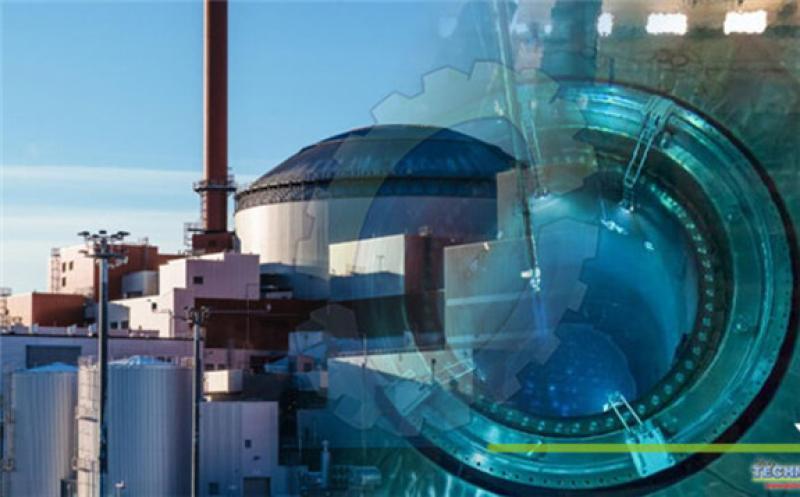Since 2005, Finland’s been constructing the largest nuclear reactor in Europe. Alongside a facility; that could solve the problem of what to do with spent nuclear fuel. If some country has fuel, and think about nuclear then Nordic nation doesn’t immediately jump to mind. If all of its planned projects come to futurization, then it is by the end of this decade. Therefore, Finland is on second, after the France as per the percentage of energy taken from nuclear reactor. It’s an immense nuclear project, though.

History of Finland’s Nuclear Technology
Finland actually has a little history with nuclear power. Its first reactor came online in 1977 and by 1983 more three more were operational. Overall, providing a third of Finland’s total energy needs. While, these nuclear reactors are among the most efficient in the world. Effectively, these reactors are running at 95% capacity factor for the past decades ; continually operational over their life cycle. In growing requirements, and the seasonal changes of other energy sources such as Hydro and Solar has left the country. Only relying on imports from other countries like Russia and Sweden; to create a balance of its energy requirements.
Further to reduce its dependency on foreign power and assist its aim of carbon neutrality. By 2035, the Finnish government approved the construction of what was meant to be the world’s first third generation pressurized water reactor or ERP. It is located in OLKILUOTO nuclear plants known as OL3 in 2005.
Overview of Project
An initial cost of 3.9 billion US Dollars was too nearly double the plants existing output This provides Finland 14% of fule energy needs when it became operational by 2010. But this OL3 was the first EPR to begin construction; ahead of other next generation reactors in France, China and the UK. The complexities surrounding the design, drawbacks in safety systems and contractual disputes; these led to over a decade of delays. In 2018 China’s Tai Shan 1 reactor became the first world EPR reactor to start operating.
Despite, these delays and the cost swelling to over 10.2 billion US dollars. In 2019, OL3 was granted an operation licensed by Finland’s radiation and nuclear safety authority. Now, in this March 2021 a total 116 tons of uranium began to load in reactor; before its final testing period. Finally, in early 2022 Once Finland connected to the grid and the reactor begins commercial production. The countdown will be on; Until begins adding to Finland’s spent fuel stockpile.
Effect of Nuclear Power
Nuclear power is an incredibly clean way to produce energy. But, it does create a by-product and it’s the one problem; we’ve yet to truly solve. After three -six years, a residue material is no longer able to sustain; a reaction as a viable fuel source. Therefore, new material must be brought in to maintain the reactors efficiency. But, while it’s unable to generate electricity, spent fuel remains highly radioactive. Its need to be isolated for hundreds of thousands of years; to prevent it causing harm to people or the surrounding environment. Although, the spent fuel can be re enriched and reenter the fuel cycle.
The main way we currently deal with radioactive waste is to simply store. It in pools or seal; the dry storage facilities while it slowly decays. Well, these methods keep spent fuel contained. It’s not a viable long-term solution. As the system is too much dependence on conventional and labor intervention. Sometimes even under the strictest conditions, it can be vulnerable to attacks of terrorism or natural disasters. The kind that led to the events that Fukushima in 2011.
It is estimated 250,000 tons of high level waste already in storage around the world. In no long-term strategy of dealing with; many countries have chosen to completely rule out nuclear power when it comes to meeting their growing energy needs.
Finland’s Solutions of Nuclear Waste
In an attempt to solve this since 2005 PERSEVER, a joint venture between Finland’s II nuclear power providers has been constructing; the world’s first deep geological repository to spend fuel in the billion-year-old bedrock. Further, it is not far from OL3.
Funded by charges, which are collected from consumers through electricity sales. The one that billion US dollar project, that’s due to complete in 2023. Now we’ll see a series of tunnels, extended half a kilometer below ground creating a permanent disposal facility for used fuel.
At last, burying nuclear waste might sound alarming and may cause concern to environmental groups. The process at OL3 is so much more than simply burying the problem; based on a Swedish disposal method known as KBS-3.
The irradiated material is placed into steel consisting boron, as well consisting canisters. It is closed into a chemical resistant capsules made up of copper before dump into single holes; and then back-filled with bentonite clay in tuning it forever. Once buried no further, Individual or machine intervention is necessary to consist the radioactive work. Basically removing one of the major problems many countries have; when it comes to selecting nuclear energy.
Future of the World through Finland Technology
With the capability to encapsulate the next 50 years’ worth of. Finland’s accumulated spend fuel and the needs of its existing reactors until at least 2120. At this time , the facility is permanently close. This OL3 appears to provide a viable long-term solution to dealing with, with nuclear waste.
The director of the international atomic energy agency says it is a game-changer for the industry. The lessons learned at from OL3 are being shared with other countries and regions with suitable geological characteristics are being considered for similar disposal having sites.
Seemingly solved the biggest drawback of nuclear power; and with the sixth reactor already planned to begin construction. In year 2022, the Finland looks to develop a head role in the really large adoption of Nuclear Engineering. The world shall transform from traditional consumption of fossil fuels.